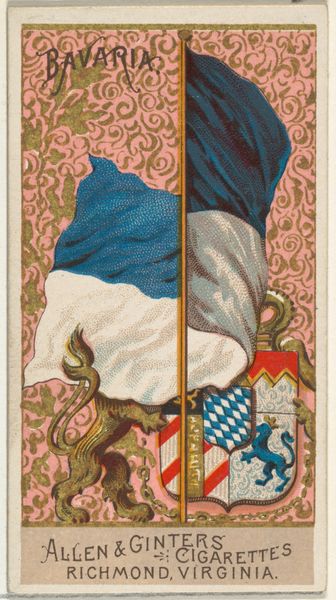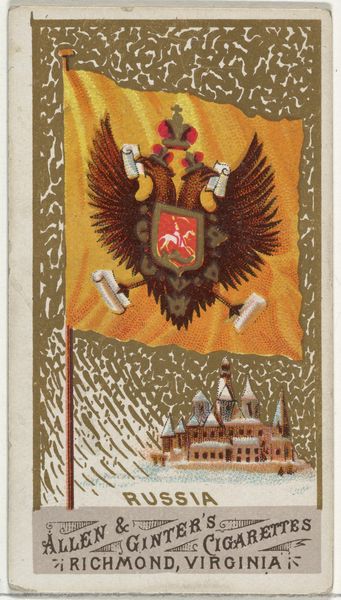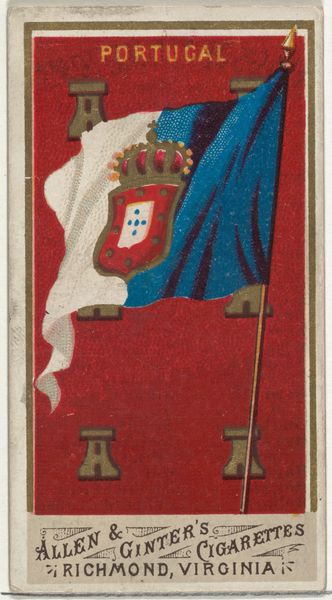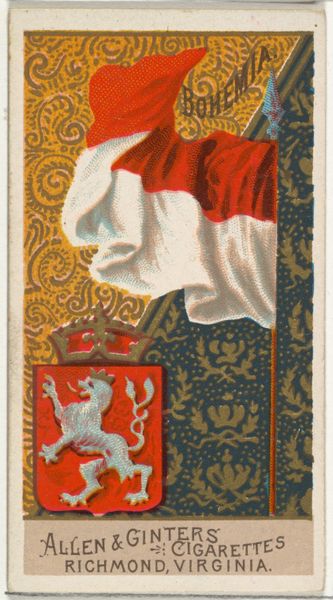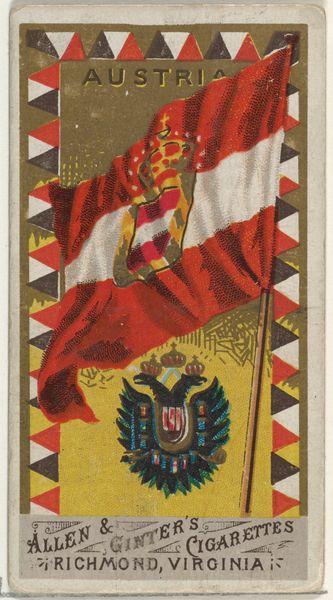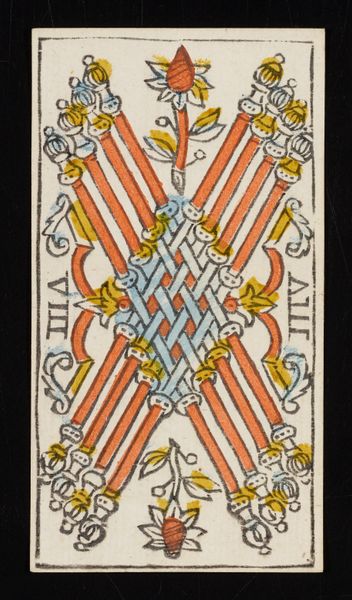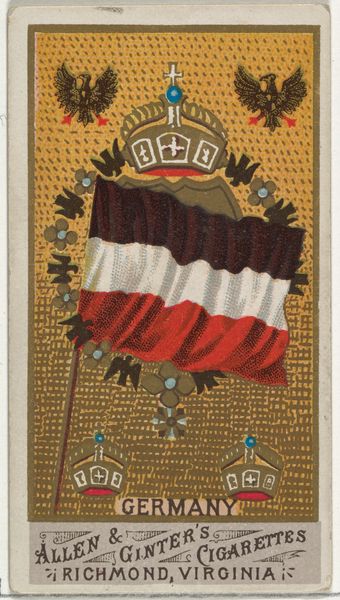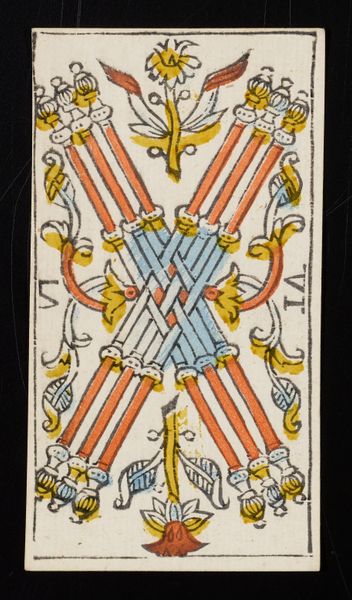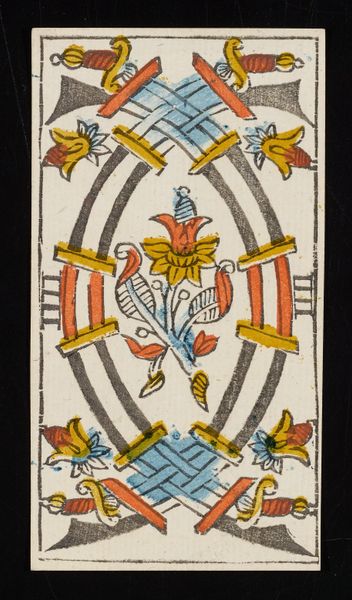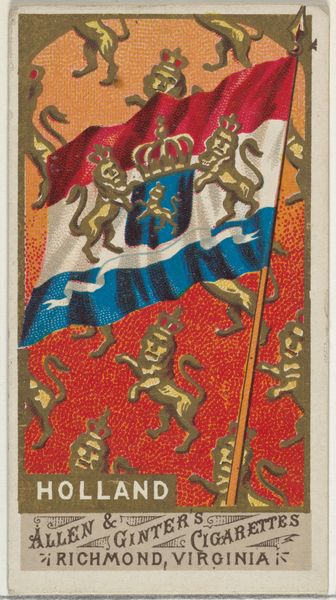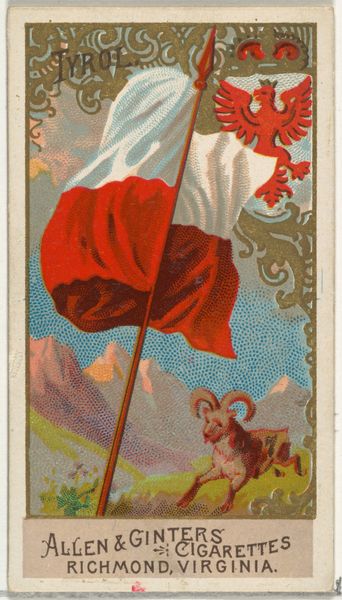
Prussia, from Flags of All Nations, Series 2 (N10) for Allen & Ginter Cigarettes Brands 1890
0:00
0:00
drawing, graphic-art, print
#
portrait
#
drawing
#
graphic-art
# print
Dimensions: Sheet: 2 3/4 x 1 1/2 in. (7 x 3.8 cm)
Copyright: Public Domain
Curator: I’m immediately struck by how muted and somber this image feels, given its origins as a collectible card. Editor: Indeed. Let’s delve a little deeper. We’re looking at "Prussia," a lithograph print dating back to 1890, from the "Flags of All Nations, Series 2" produced by Allen & Ginter, a cigarette brand. It’s currently held at the Metropolitan Museum of Art. Curator: Flags always carry such charged meaning. The colors here—the black and white, against that floral backdrop—they seem almost drained, subdued. There is very little red save for the claws and tongue of the eagle. The imperial symbolism seems almost oppressive, weighted down. Editor: Exactly. The flag and the eagle serve as potent emblems of Prussian power. Contextualizing it within its time, Germany was on the rise. And though Allen & Ginter was an American company, its use of the image underscores how nationalism was being marketed and consumed globally. This small card speaks volumes about cultural anxieties. Curator: And there's that crowned heraldic eagle. It's been such a prominent symbol through centuries of European history. This representation of power has deep roots. I mean, look how stiff it is. And of course, we can trace these symbols back through medieval heraldry to Roman imperial iconography and even older sources. What about the implications of presenting this image in promotional material? Editor: Ah, but therein lies a critical point. By placing it on a cigarette card, the symbol becomes detached from its context, transformed into a commodity, one in a series of exotic locales, each tamed, made palatable for a smoker. Curator: The more that the commercial use is separated from national history, the more interesting its image and circulation becomes. I still struggle to overcome a feeling of its power. The Prussian empire lasted such a long time and exerted itself on the history of modern Europe in various ways, the weight is enormous. The icon resists easy demystification! Editor: Which proves the point: icons persist precisely because they resonate across shifting contexts, adapting themselves to new frameworks even as their meaning morphs with them. But here we are today still reading its symbolism and critiquing the power and political history in which it became. Curator: Absolutely. Looking at this little piece I see an image of history's enduring power to both entice and threaten, compressed into a commercial trinket. Editor: And a reminder of the complex interplay of commerce, nationalism, and identity construction.
Comments
No comments
Be the first to comment and join the conversation on the ultimate creative platform.
